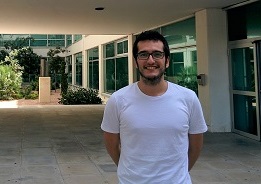
This learning method meant a revolution when it started being in force and, nowadays, it is widely accepted as it offers several benefits
4 march 2016
1. What is CLIL / AICLE?
Content Language Intefrated Learning (CLIL; in Spanish Aprendizaje Integrado de Contenidos y Lenguas Extranjeras, AICLE) is the teaching term used to commonly refer to linguistic immersion. The term CLIL (AICLE in Spanish) was created in 1994 by David Marsh to describe the applied linguistics movement which ensures that learning a foreign language is more successful through in common matters.
2. What is is based on?
This method is based on applying the language to be learnt in common subjects, not only learning the language from the point of view of linguistics. That is, CLIL or AICLE states that if we wish to learn Spanish it should be by studying common subjects in Spanish, not through a Spanish Subject which is treated in isolation and which creates forced and made-up situations.
3. What is the role played by language in CLIL / AICLE?
In this system, language is at the centre of the learning process. Language is learnt by using it in non-prepared situations, in real situations the students will be able to repeat during their lives. It is the active application of language when studying to be used to talking in it and to be prepared to face future daily life situations. Content Language Intefrated Learning (CLIL; in Spanish Aprendizaje Integrado de Contenidos y Lenguas Extranjeras, AICLE) is a cognitive challenge for students who, this way, develop their basic abilities for interpersonal communication and their competency in cognitive-academic language.
4. Which are the benefits this method offers opposite to other methods?
Multiculturalism is one of the main benefits of linguistic immersion, added to the knowledge of foreign languages. Language, thought and culture are linked, so this method offers students the opportunity of interacting with other cultures.
5. What is the methodology used?
CLIL / AICLE teaching is centred on the student and it is a very flexible type of teaching. Learning is interactive and autonomous and it not only focuses on theoretical knowledge but also on processes and tasks. The main source of linguistic contribution (input) comes from texts and listening, so the most practised abilities are reading and oral comprehension. Language can be seen from a more lexical than grammatical point of view, and the most important thing is for the student to acquire fluency in the language.










